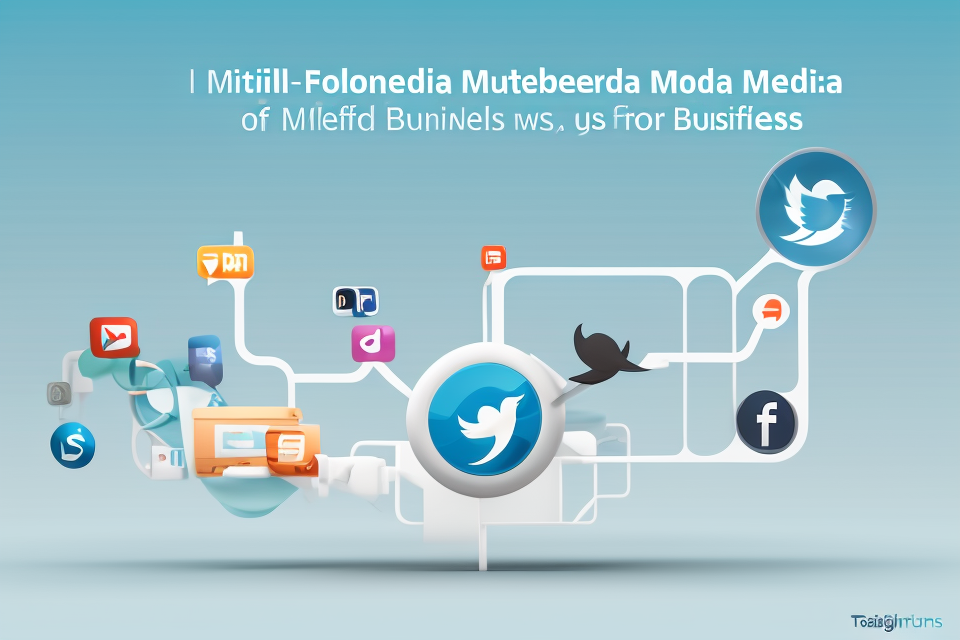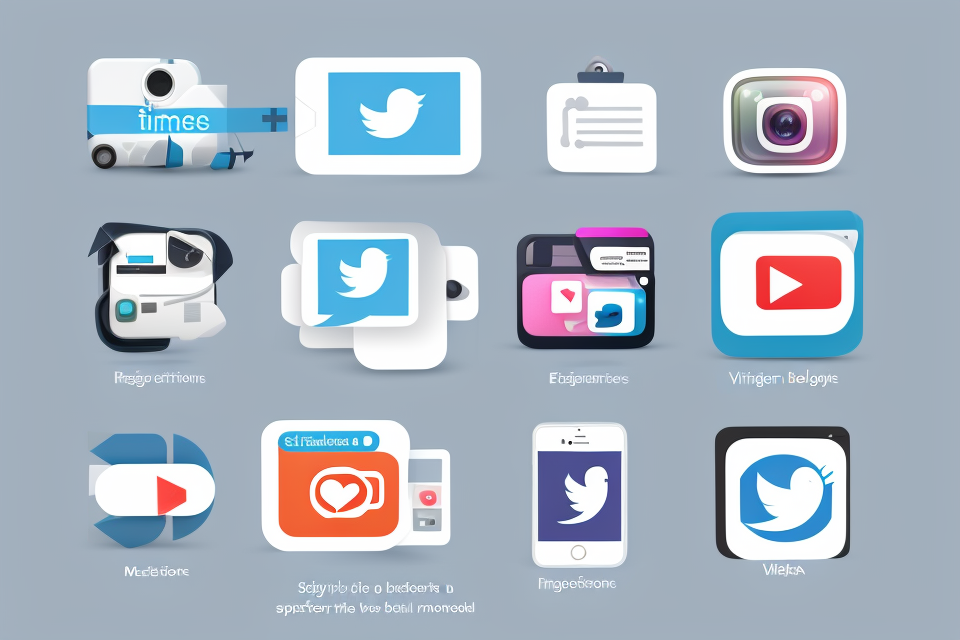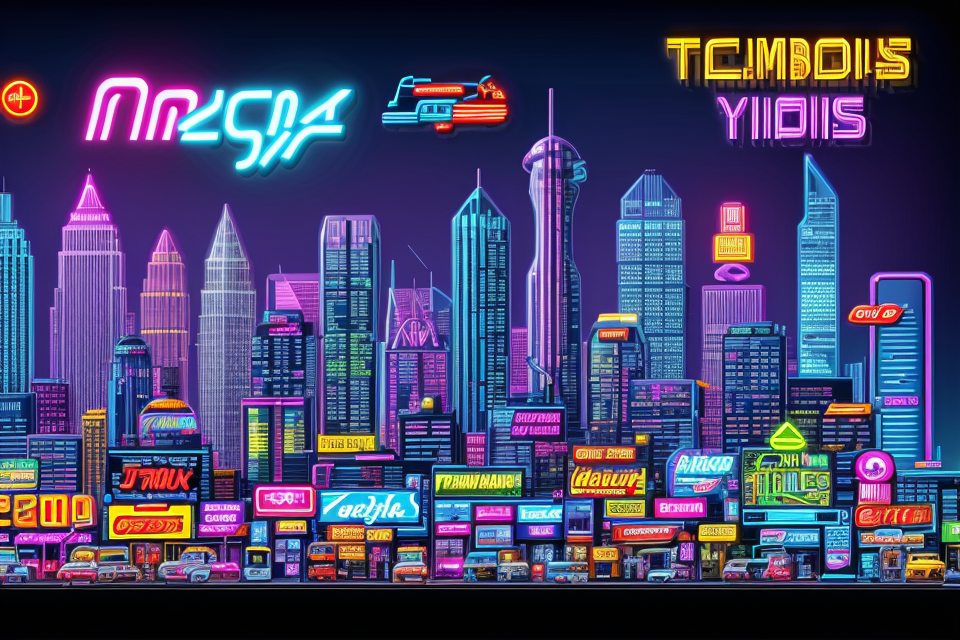Before MySpace, there was a world of social media that paved the way for the platform we know today. In the early days of online communication, users flocked to sites like Friendster and GeoCities to connect with others and share their experiences. These sites may not have had the same level of sophistication as MySpace, but they were the foundation upon which the modern social media landscape was built. In this retrospective, we’ll take a look back at the early days of social media and explore the sites that came before MySpace, and how they helped shape the online world we know today.
The Origins of Social Media
The Early Days of the Internet
The First Social Media Platforms
The early days of the internet saw the emergence of several social media platforms that paved the way for the development of more sophisticated systems in the years to come. These early platforms included bulletin board systems and online services, which allowed users to communicate and share information in new and innovative ways.
Bulletin Board Systems
Bulletin board systems (BBS) were among the earliest forms of social media, providing users with access to message boards, forums, and other interactive features. BBS were typically operated by individuals or small groups and were accessed through a phone line or modem. They were often used by hobbyists and enthusiasts to share information and ideas, and were an important early example of the potential for online communities to connect and collaborate.
Online Services
Online services, such as CompuServe and Prodigy, were another early form of social media that provided users with access to email, message boards, and other interactive features. These services were typically provided by internet service providers (ISPs) and were accessed through a dial-up connection. They were popular among users who wanted to stay connected with friends and family, and were an important early example of the potential for online communication to bridge geographic distances.
The Emergence of Personal Home Pages
As the internet began to grow and evolve, personal home pages became an increasingly popular way for users to express themselves online. These pages were typically created using simple HTML and were hosted on a variety of platforms, including GeoCities and Tripod. Personal home pages allowed users to share photos, stories, and other content with friends and family, and were an important early example of the potential for social media to facilitate self-expression and creativity.
MySpace: The Next Evolution of Social Media
The Rise of MySpace
MySpace, launched in 2003, quickly became a dominant force in the social media landscape. It offered users a unique platform to connect with friends, share content, and build online communities.
The Creation of MySpace
MySpace was founded by Tom Anderson and Chris DeWolfe, two entrepreneurs who saw the potential for a new kind of online social network. They initially called the site “Friendster,” but after discovering that a similar name was already in use, they renamed it MySpace.
Tom Anderson and Chris DeWolfe
Tom Anderson and Chris DeWolfe were both experienced in the tech industry and had a vision for a social networking site that would be more user-friendly and accessible than its predecessors. They raised funding and assembled a team to build the platform.
The Friendster Influence
MySpace was heavily influenced by the success of Friendster, a popular early social networking site. However, MySpace sought to differentiate itself by offering more features and a more intuitive user interface.
The MySpace Phenomenon
MySpace quickly gained popularity, especially among young people. The platform’s customizable profiles, music sharing, and celebrity fan clubs helped to fuel its growth.
Music and Celebrity
MySpace was instrumental in promoting emerging musicians and helping them connect with fans. Artists could create profiles, share their music, and engage with fans through message boards and chat rooms.
Customizable Profiles
MySpace allowed users to create highly personalized profiles, complete with photos, music playlists, and detailed personal information. This feature was particularly appealing to teenagers and young adults who wanted to express their individuality online.
Networking and Connecting
MySpace facilitated networking and connecting with others by allowing users to add friends, join groups, and participate in forums. This made it easy for people to expand their social circles and engage with like-minded individuals.
In conclusion, the rise of MySpace was fueled by its innovative features, user-friendly interface, and ability to connect people. It became a cultural phenomenon and set the stage for the continued evolution of social media.
The Decline of MySpace and the Rise of Alternatives
The Fall of MySpace
The decline of MySpace can be attributed to several factors, including the emergence of Facebook and its eventual dominance of the social media landscape. MySpace’s inability to adapt to the changing needs of its users, as well as its poorly executed redesign, contributed to its downfall.
The Impact of Facebook
Facebook, founded in 2004 by Mark Zuckerberg, quickly gained popularity among college students, who used the platform to connect with one another and share information. Unlike MySpace, which focused on music and self-expression, Facebook prioritized building real-life connections and facilitating communication between individuals.
The Emergence of Facebook
In its early days, Facebook was unique in its focus on the college experience. The platform allowed users to create profiles, connect with classmates, and share content, such as photos and articles. This emphasis on community and shared experiences resonated with users and helped Facebook to rapidly gain traction.
Facebook’s Dominance
As Facebook continued to grow, it began to incorporate features that MySpace users had come to expect, such as user-generated content and customizable profiles. In addition, Facebook’s clean and simple interface was easier to navigate than MySpace’s cluttered design, which contributed to its popularity.
Losing Ground to Facebook
As Facebook’s user base expanded, MySpace’s user numbers began to decline. Many users migrated to Facebook due to its more intuitive design and focus on real-life connections. MySpace’s inability to compete with Facebook’s growth and popularity led to a significant loss of users.
Sale to News Corp
In 2005, News Corp acquired MySpace for $580 million. However, despite this infusion of capital, MySpace was unable to regain its lost ground and remained in decline. By 2011, News Corp had sold MySpace for just $35 million, marking the end of its dominance in the social media landscape.
The Evolution of Social Media Since MySpace
The Current Landscape of Social Media
The Major Players Today
Facebook, launched in 2004, is currently the largest social media platform with over 2.8 billion monthly active users. It started as a platform for college students to connect and share information but has since expanded to include features such as messaging, video calling, and advertising.
Instagram, launched in 2010, is a photo and video sharing app that has over 1 billion monthly active users. It was acquired by Facebook in 2012 and has since become a major player in the social media landscape, particularly among younger users.
Twitter, launched in 2006, is a microblogging platform that allows users to share short messages of up to 280 characters. It has over 330 million monthly active users and is particularly popular among politicians, celebrities, and journalists.
TikTok
TikTok, launched in 2016, is a video-sharing app that has quickly gained popularity, particularly among younger users. It has over 1 billion monthly active users and is known for its short-form videos and viral challenges.
LinkedIn, launched in 2003, is a professional networking platform that is used by over 700 million users worldwide. It allows users to connect with colleagues, share information about their careers, and find job opportunities.
Others
There are many other social media platforms that are popular today, including Snapchat, Reddit, Pinterest, and YouTube. Each platform has its own unique features and user base, making it important for individuals and businesses to choose the platforms that are most relevant to their needs.
The Legacy of MySpace
The Impact on Pop Culture
MySpace played a significant role in shaping the pop culture of the early 2000s. Its unique features and user-generated content created a platform for emerging artists, musicians, and fashion trends to gain exposure and influence the masses.
Music and Musicians
The Emergence of Internet Celebrities
MySpace allowed artists to create their own profiles and share their music with a wider audience, which led to the emergence of internet celebrities. These individuals built massive followings through their online presence, leveraging social media to promote their music and engage with fans. This shift in how artists could gain fame and success changed the music industry forever.
The Shift in Music Marketing
Traditional music marketing methods were disrupted by the rise of MySpace. Artists could now connect directly with their fans, eliminating the need for middlemen like record labels. This shift in power allowed independent musicians to thrive, as they could promote their music and build a fanbase without the constraints of traditional record deals.
The Rise of Independent Artists
MySpace played a crucial role in the rise of independent artists. With the ability to share their music directly with fans, artists could build a following and gain exposure without the support of a major label. This democratization of the music industry led to a proliferation of unique sounds and styles, as well as the emergence of genres like indie and alternative rock.
Fashion and Style
Emo Culture
MySpace also played a significant role in the emergence of emo culture. Emo fashion, characterized by dark clothing and dramatic makeup, gained popularity on the platform as users shared their style and bonded over shared interests. This new subculture had a profound impact on mainstream fashion, leading to the widespread adoption of emo-inspired styles.
The Impact of Social Media on Fashion
Social media platforms like MySpace changed the way people consumed and shared fashion trends. Users could follow their favorite designers and brands, as well as share their own style with the world. This shift in fashion consumption and promotion led to the rise of influencers and streetwear culture, as individuals with large online followings became tastemakers in the fashion industry.
The Rise of Streetwear
MySpace also played a significant role in the rise of streetwear culture. The platform allowed individuals to share their unique fashion sense and connect with others who shared their interests. This led to the growth of streetwear as a legitimate fashion movement, with brands like Supreme and Bape gaining massive followings and becoming household names.
In conclusion, MySpace’s impact on pop culture was profound, as it provided a platform for emerging artists, musicians, and fashion trends to gain exposure and influence the masses. Its legacy can still be seen in the music and fashion industries today, as social media continues to shape the way we consume and share culture.
The Lessons Learned
The Importance of Innovation
- Staying Ahead of the Curve
- The early social media platforms had to constantly innovate to keep up with the rapidly changing technology and user demands.
- They had to be quick to adapt to new trends and incorporate new features to remain relevant and attract users.
- Embracing Change
- Social media platforms had to constantly evolve and change to stay ahead of the competition and meet the needs of their users.
- They had to be willing to take risks and try new things to stay relevant and keep users engaged.
The Need for User-Centered Design
- Understanding User Needs
- Early social media platforms had to focus on understanding the needs and wants of their users to create a product that was both useful and engaging.
- They had to gather feedback from users and use it to inform design decisions.
- Designing for Engagement
- The early social media platforms had to prioritize user engagement and retention to ensure the success of their product.
- They had to create a platform that was easy to use and navigate, with a clear and intuitive design.
The Role of Data in Social Media
- Collecting and Analyzing Data
- The early social media platforms had to collect and analyze data on user behavior and engagement to understand how to improve and grow their product.
- They had to use data to inform design decisions and make strategic business decisions.
- Personalization and Targeting
- The early social media platforms had to use data to personalize the user experience and target specific user groups with relevant content.
- They had to use data to create a more personalized and relevant experience for each user.
- Privacy Concerns and Regulations
- The early social media platforms had to navigate privacy concerns and regulations to protect user data and ensure compliance with privacy laws.
- They had to balance the need to collect and use data with the need to protect user privacy.
FAQs
1. What was the first social media platform?
The first social media platform was called Six Degrees of Separation, which was launched in 1997. It allowed users to create profiles, connect with other users, and share content. However, the platform was short-lived and was eventually shut down in 2000.
2. What was the first widely popular social media platform?
The first widely popular social media platform was Friendster, which was launched in 2002. It allowed users to create profiles, connect with other users, and share content. Friendster was particularly popular in the early 2000s and was one of the first social media platforms to gain mainstream adoption.
3. When was MySpace launched?
MySpace was launched in 2003. It quickly gained popularity and became one of the most widely used social media platforms in the world. MySpace allowed users to create profiles, connect with other users, and share content. It was particularly popular among teenagers and young adults.
4. What made MySpace popular?
MySpace was popular for several reasons. It allowed users to customize their profiles with unique backgrounds and graphics, which appealed to younger users. It also allowed users to connect with friends and family, and to share photos and videos. Additionally, MySpace was one of the first social media platforms to allow users to stream music online.
5. What happened to MySpace?
MySpace eventually lost its popularity as newer social media platforms emerged. In 2011, News Corp sold MySpace to Specific Media, and the platform underwent several changes in an attempt to revive its popularity. However, it never regained its former glory, and today it is largely considered a relic of the early days of social media.



